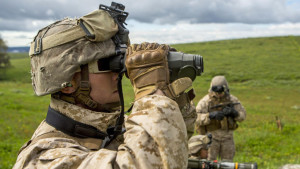Tactical Cloudlets: Mobile Computing Readies for Battle
During 14 years of war in the Middle East, Marines and soldiers came to rely on having ready access to computers. And the more capability they had, the more they...
 During 14 years of war in the Middle East, Marines and soldiers came to rely on having ready access to computers. And the more capability they had, the more they wanted.
During 14 years of war in the Middle East, Marines and soldiers came to rely on having ready access to computers. And the more capability they had, the more they wanted.
“What that evolved into was a tremendous demand for power and cooling that drove a need for fuel for generators,” said Kenneth Bible, the Marine Corps deputy director of C4 [command, control, communications and computers] and deputy chief information officer.
Fuel trucks became targets for insurgents, and defending them became an extra burden for troops. Clearly, a more efficient solution was needed.
Meet the “tactical cloudlet.” It brings the same concepts of distributed cloud computing to a remote and mobile battlefield scenario. The Marine Corps, Army, and university researchers are all working on the concept.
“We started to look at how we can start to lighten that load, particularly recognizing that the Marine Corps is heading back to more traditional roles” now that the heavy ground combat of Iraq and Afghanistan have come to an end. The Marines anticipate operating lighter expeditionary units that can respond to crises – from embassy evacuations to earthquake relief – in a matter of hours, Bible said.
Those units need computing power as soon as they land. But in order to maintain maneuverability, they need to keep light.
“If I can’t carry it, eat it, or shoot it, then I probably don’t want it,” Bible said. Except that the Marines do want forward deployed computing power, and “cloud computing looked like a great opportunity to lighten the load.”
But computing at the tactical edge is challenging even for the smartest of smart mobile devices. Connectivity there is often intermittent, and computers that are small enough to be highly portable lack the computing power and battery life needed for intensive data crunching.
Cloud computing relies on applications, storage, and computing power that resides not on limited local machines, but on networks of much more capable servers. Clouds enable “thin clients,” such as handheld devices with limited computing power, to tap into much greater computing capabilities via the Internet or other networks.
Click here for the full story.
Copyright © 2024 Federal News Network. All rights reserved. This website is not intended for users located within the European Economic Area.


